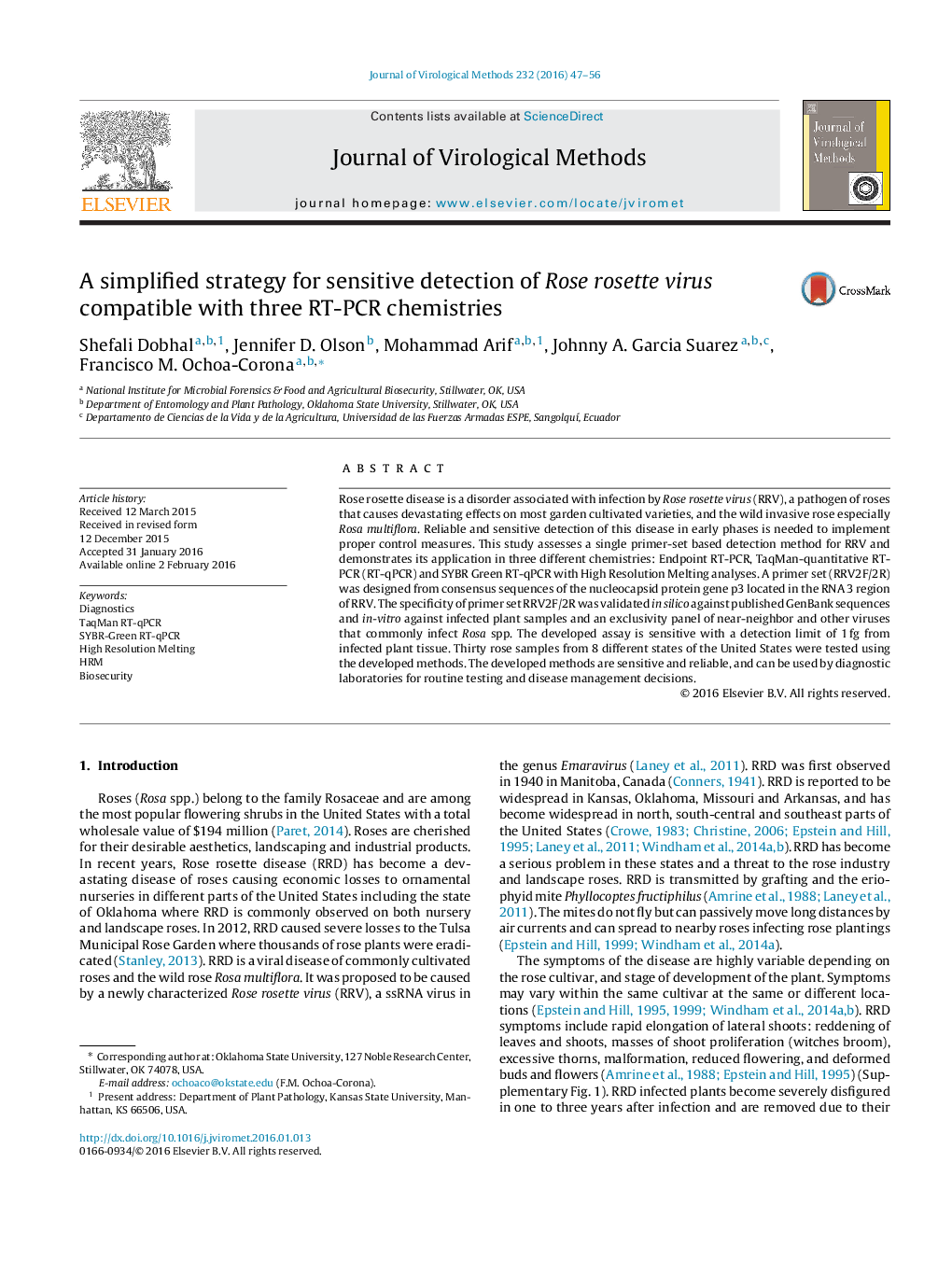| Article ID | Journal | Published Year | Pages | File Type |
|---|---|---|---|---|
| 3406588 | Journal of Virological Methods | 2016 | 10 Pages |
•RT-PCR assay for detection of Rose rosette virus was developed.•Single primer set was used in all three RT-PCR chemistries.•Primer set was highly sensitive, detecting 1 fg of virus from infected tissue.•Developed assays are sensitive and reliable.•Developed assays successfully detected RRV from field samples.
Rose rosette disease is a disorder associated with infection by Rose rosette virus (RRV), a pathogen of roses that causes devastating effects on most garden cultivated varieties, and the wild invasive rose especially Rosa multiflora. Reliable and sensitive detection of this disease in early phases is needed to implement proper control measures. This study assesses a single primer-set based detection method for RRV and demonstrates its application in three different chemistries: Endpoint RT-PCR, TaqMan-quantitative RT-PCR (RT-qPCR) and SYBR Green RT-qPCR with High Resolution Melting analyses. A primer set (RRV2F/2R) was designed from consensus sequences of the nucleocapsid protein gene p3 located in the RNA 3 region of RRV. The specificity of primer set RRV2F/2R was validated in silico against published GenBank sequences and in-vitro against infected plant samples and an exclusivity panel of near-neighbor and other viruses that commonly infect Rosa spp. The developed assay is sensitive with a detection limit of 1 fg from infected plant tissue. Thirty rose samples from 8 different states of the United States were tested using the developed methods. The developed methods are sensitive and reliable, and can be used by diagnostic laboratories for routine testing and disease management decisions.
